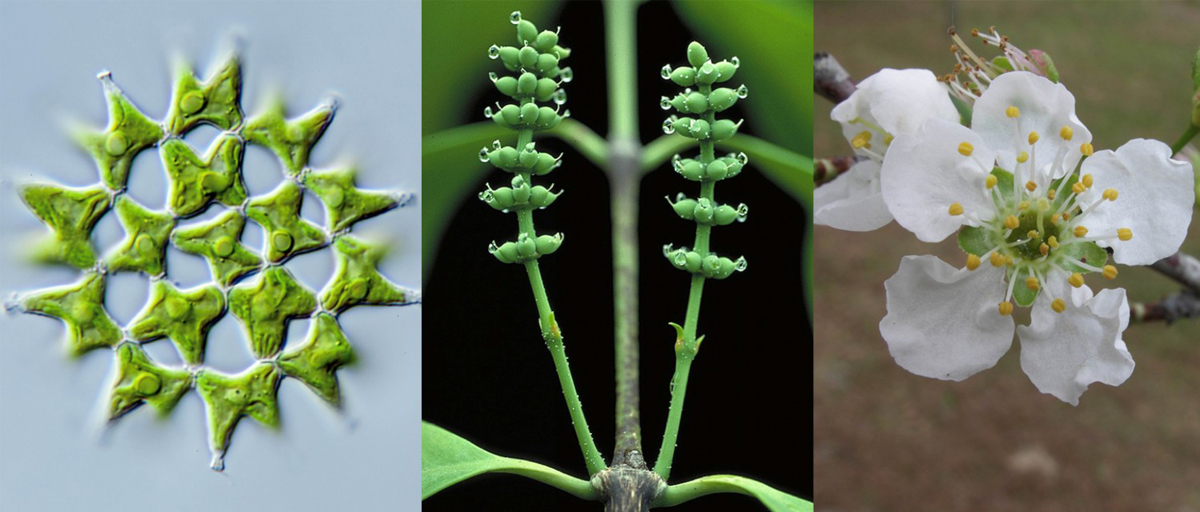
International Research Team Traces Family Tree of More than 1,100 Green Plants Over 1 Billion Years
October 30, 2019| |
An international group of more than 200 scientists have now published the gene sequences of more than 1,100 green plants providing insights into everything from algae and ferns to farm crops and forest trees. The study, One Thousand Plant Transcriptomes and Phylogenomics of Green Plants, published in Nature reveals the history of how and when plants gained the ability to grow tall and make seeds, flowers and fruits, providing a framework for understanding plant diversity around the planet. The group, belonging to the One Thousand Plant Transcriptomes Initiative (1KP) examined the diversification of plant species, genes, and genomes across the more than one-billion-year history of green plants dating back to the ancestors of flowering plants and green algae.
James Leebens-Mack, professor of plant biology at the University of Georgia and co-corresponding author on the study, said their research shows that over the last billion years, ancestral green algal species split into two separate evolutionary lineages. One lineage included flowering plants, land plants, and related algal groups. The other lineage comprised a diverse array of green algae. He also noted plant evolution has been punctuated with innovations and periods of rapid diversification.
According to Mike Barker, an ecologist and evolutionary biologist at the University of Arizona, the biggest surprise of their study was the near absence of whole genome duplications in the algae. They found that the average flowering plant genome has nearly four rounds of ancestral genome duplication dating as far back as the common ancestor of all seed plants more than 300 million years ago. They also found multiple rounds of genome duplication in fern lineages, but found little of genome doubling in algal lineages. Aside from genome duplications, the expansion of key gene families contributed to the evolution of multicellularity and complexity in green plants.
For more details, read the University of Alberta's Folio.
| |
You might also like:
- Plant Genome Editing Database (PGED) Goes Live
- Tomato Pan-Genome Reveals 4,873 Undocumented Genes
- ISAAA Pocket K No. 15: 'Omics' Sciences: Genomics, Proteomics, and Metabolomics
Biotech Updates is a weekly newsletter of ISAAA, a not-for-profit organization. It is distributed for free to over 22,000 subscribers worldwide to inform them about the key developments in biosciences, especially in biotechnology. Your support will help us in our mission to feed the world with knowledge. You can help by donating as little as $10.
-
See more articles:
-
News from Around the World
- 'Oppressively burdensome' Gov't Regulations Impede Longed-for Approval of Golden Rice
- Biotech Soybeans Now Cover 50% of the World's Biotech Crop Area
- Niger Parliament Approves National Biosafety Law
- International Research Team Traces Family Tree of More than 1,100 Green Plants Over 1 Billion Years
- Scientists 'Vaccinate' Plant to Boost Defense Against Pest
- Young NZ Scientists Appeal for Overhaul of GM Research Regulations
- Study Finds Organic Farming is Worse for Climate Change
-
Research Highlights
- Interplay between miR156/SPL13 and DFR/WD40–1 Affects Drought Tolerance in Alfalfa
- Developing Ozone Tolerance in Tomato Might Interfere with Plant Disease Management
-
Plant
- CRISPR-Cas9 Used to Reduce Seed Dormancy in Rice
- Harvard, MIT Experts Develop New Gene Editing Technology
-
Read the latest: - Biotech Updates (November 12, 2025)
- Gene Editing Supplement (October 29, 2025)
- Gene Drive Supplement (February 22, 2023)
-
Subscribe to BU: - Share
- Tweet

